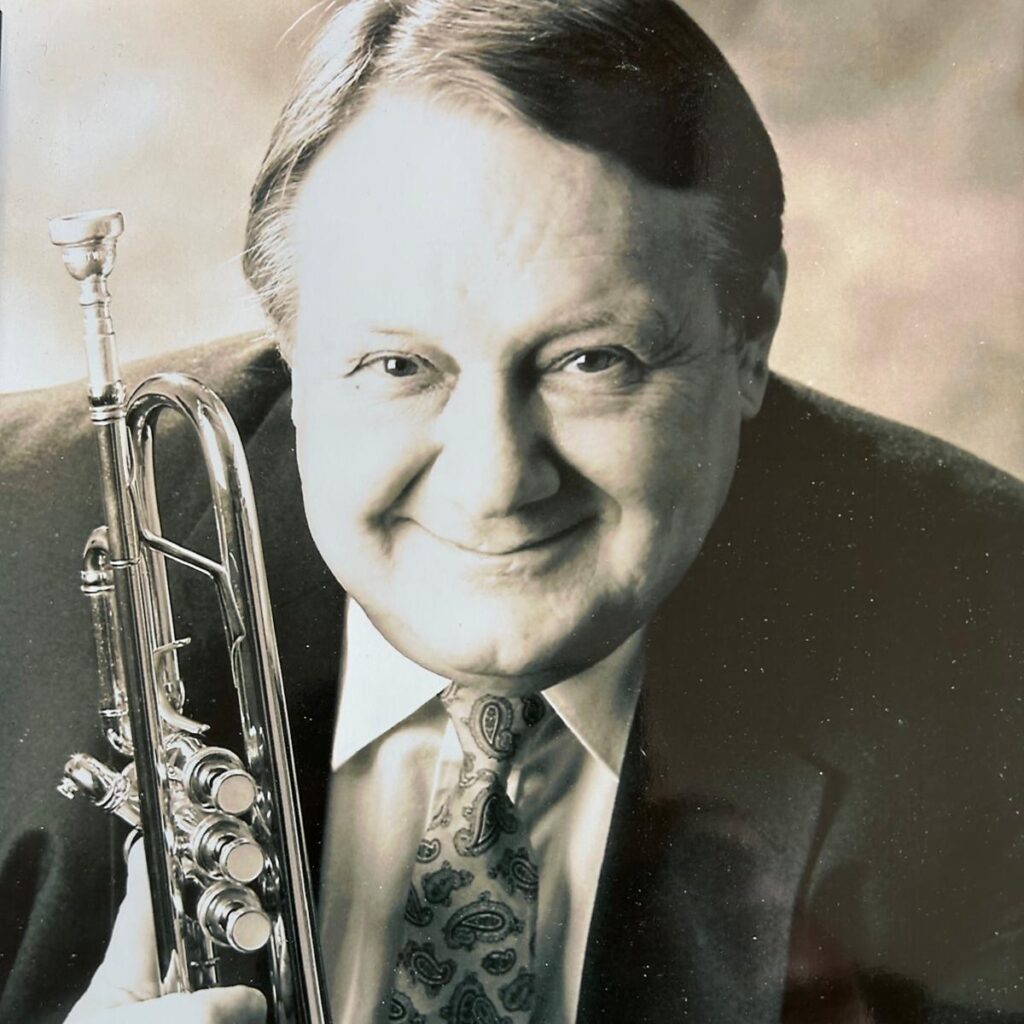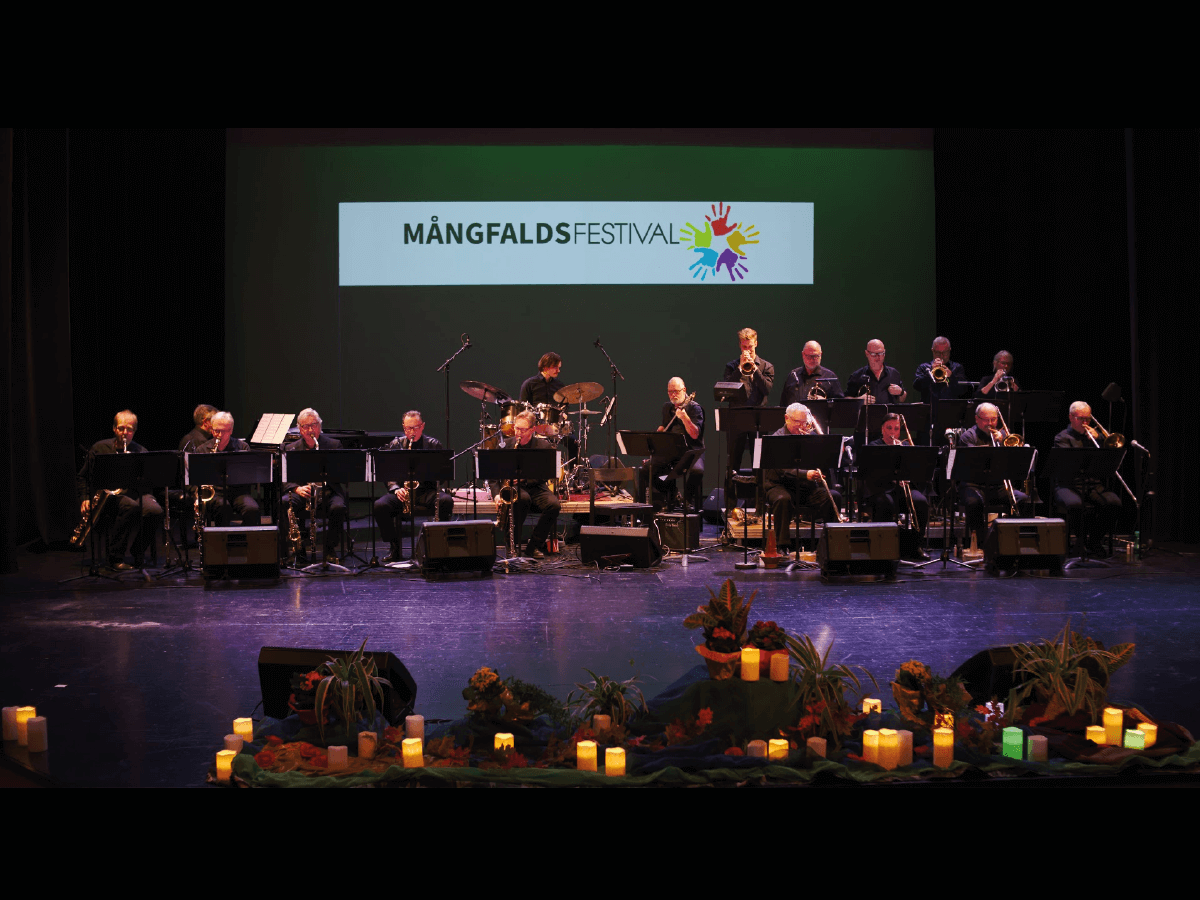
George Graham’s Life and Legacy
George Graham’s Childhood and Upbringing
George Graham was born in Chicago during the same week and in the same hospital as Rafael Méndez’s twin sons, Rafael Jr. and Robert. George’s father, Pappy Graham—often known simply as “Pappy”—befriended Rafael Méndez while Rafael worked in Chicago’s industrial areas. Pappy, a real estate agent with a gift for connecting with people, was also a highly skilled trumpet player. He took a keen interest in Rafael Méndez’s trumpet playing, and the two men often played duets together in a weekly radio show.
Before the boys turned five, Rafael and Pappy decided to move to North Hollywood, California, to further Rafael’s trumpet career. Pappy organized a series of weekly radio shows where they played duets and shared stories about their lives. During the broadcasts, Rafael Jr., Robert, and George were constant companions, listening intently. Rafael took special care of the boys’ trumpet development, giving them regular lessons and guiding their daily practice routines.
With Pappy’s support, Rafael Méndez flourished in his trumpet career, eventually earning the title “Heifetz of Trumpets,” recognizing him as one of the greatest trumpet virtuosos ever. Rafael’s sons both became neurosurgeons but maintained their trumpet virtuosity, often playing alongside their father. George Graham also continued his trumpet journey, performing in various orchestras. He even played in the same orchestra as DJ Maytan on occasion, notably during performances of the popular “Bugler’s Holiday” composed by Leroy Anderson for the Mendez family.
While in high school, George Graham took trumpet lessons from several studio musicians in Los Angeles, eventually becoming skilled enough to appear on numerous recordings. A schoolmate and later military bandmate in the Army Band based in Victorville, California, John Williams, would go on to become a prominent film composer. John and George shared a close friendship, and John consistently asked George to play lead trumpet in his film scores, writing the lead trumpet parts specifically with George in mind.
George Graham’s Early Musician Days
After his time in the Army Band, George was hired as the lead trumpet for the Artie Shaw Orchestra, a popular touring big band. During his time with the band, George honed his musical skills and developed an impressive tonal range. His playing was characterized by a rich, full-bodied sound that allowed him to transition seamlessly between delicate ballads and powerful, forceful movements. Composers like John Williams and Hans Zimmer took full advantage of George’s unique ability to blend sensitivity with strength in his performances.
In 1963, George moved to Reno, Nevada, where he was hired by several major show orchestras to play lead trumpet. This, after a time with the Artie Shaw Orchestra when George developed an alcohol addiction—a common issue among musicians at the time, exacerbated by the normalization of smoking and drinking through TV advertising. He eventually lost his family and his job.
Alone with his bottle, a young man noticed him and, despite George’s resistance, became interested in helping him. After many attempts, George gradually accepted the young man’s assistance. The young man recognized that George had talents and abilities that could benefit both himself and society.
After two years of support, George was on his way to becoming one of the most prominent trumpet players in the world. He performed solo trumpet with the London Symphony Orchestra in many films, particularly those scored by John Williams. He soon became the world’s most sought-after lead and solo trumpet player, with world-renowned artists specifically requesting his services.
This recovery episode in George’s life demonstrates the importance of being seen for one’s talents and capacities by others - the essence of true justice.
DJ Maytan Meets George Graham
In 1965, DJ Maytan, a young bass trombonist, was hired to play with the George Hernandez Orchestra at Harrah’s Reno. The job involved performing with Sammy Davis Jr. for seven weeks, with multiple shows each night. At just 18 years old, DJ already had three years of professional experience. Before the rehearsal, DJ met George Graham and the other musicians backstage. George, noticing how young DJ looked, jokingly asked if the band had started running a daycare, mimicking a WC Fields stance. DJ laughed and shook hands with his idols, all accomplished musicians.
When DJ returned to his chair after warming up, he found a baby gate, stuffed animals, and toys arranged around his chair with a note ´ try to play quietly during rehearsal´—an inside joke from the other musicians. DJ took the prank in stride, laughing along with the others. After the first hour of rehearsal, DJ found the baby gate and toys removed, with a neatly written note on his music stand: “Sounds good! Keep it Up! George.”
From that day forward, DJ and George became close friends. George offered DJ valuable life wisdom as well as musical insights, making himself available for questions and comradeship. It was clear that George was the commanding presence in the orchestra, guiding it with his precise playing, including phrasing, dynamics, pitch, and overall musical vision. George particularly appreciated bass trombonists who could balance the brass section effectively. He often told DJ that man’s purpose was to honor the Creator by achieving the highest quality in everything he did. George’s mantra was, “Praise the Creator, don’t worry about the conductor,” instilling in DJ and others a deep love for enhanced musical expression.
George’s influence extended beyond his playing; he fostered an environment where musicians felt free to express themselves and contribute to a powerful musical experience. He played in numerous shows with various orchestras and often requested that certain musicians, including DJ, be included in these settings.
George Graham’s Role as Orchestra Leader
Between shows, George often spent time in the world artist’s box, engaging in dialogue with the artists about their musical preferences. This allowed him to guide the orchestra in achieving the desired mood for each performance. Many world artists and conductors specifically requested George because they appreciated his ability to create a positive atmosphere, often laced with humor.
George had a few guiding principles: he always played slightly higher in pitch than the other lead players, who in turn played slightly higher than the section players. He insisted that everyone listen to him and adapt their playing accordingly.
A Couple of Anecdotes
Liberace
At Harrah’s South Shore Room in Lake Tahoe, where the venue could host 1,500 dinner guests, George played with an orchestra supporting Liberace, the renowned pianist. George, accustomed to playing slightly higher in pitch than the others, discovered during the first show that the piano had been tuned higher than usual. In response, he adjusted his pitch even higher, leading the rest of the orchestra to follow suit. Before the next show, Liberace asked for the piano to be tuned even higher, but this proved difficult as several strings broke during the attempt. Ultimately, Liberace agreed to tune the piano lower, and then performed his pieces 1/2 step higher than normal—a testament to Liberace’s skill, which tested George’s intonation skills to the max. After the performance, George and Liberace shared a laugh, with George playfully conceding to play slightly lower than the piano but still higher than the other musicians. George’s ability to see the bigger picture and adapt ensured a comfortable and successful performance for everyone involved.
Frank Sinatra
In May 1969, the opening of Caesar’s Palace in Las Vegas featured a show by Frank Sinatra. The well-known Hollywood conductor Ian Fraser was tasked with organizing the music and the musicians. Fraser, aware of George Graham’s reputation, hired him as the lead trumpeter and collaborated with George in selecting the rest of the orchestra. During the rehearsal, Sinatra unexpectedly appeared to listen to the new orchestral arrangement of “My Way,” a new song by Paul Anka. Just as Ian began to conduct, George stood up and loudly asked, “Frank! Is it going to be your way or my way?” The orchestra fell silent, as such behavior could have led to immediate dismissal and Ian entertained other occupations like dishwashing or bus driving. However, after a tense moment, Sinatra turned, smiled and responded, “George, it’s always your way.” The orchestra burst into laughter, and Ian breathed a sigh of relief “I guess I still have a job”. George had a keen sense of humor and knew how to lighten the mood in important situations, even if it meant bending the rules.
George Graham’s Dialogue with Society
Since high school, George had been well-read on current social issues and enjoyed debating with his peers and authorities alike. Even as a touring musician, he made it a point to visit colleges, engaging students and teachers in deep discussions on various topics. Often, he was invited to join or lead panel discussions. George was skilled at steering conversations toward a deeper understanding of the issues and recognizing the interests of those involved, releasing practical, constructive solutions that could enhance the well-being of everyone involved.
His goal in every discussion was to foster dialogue that led to increased happiness and well-being for all. He had a talent for recognizing others’ potential to contribute to society and constantly encouraged people to invest in meaningful pursuits. George initiated many cultural projects aimed at promoting mutual appreciation and understanding. He was frequently invited as a guest soloist at university festivals and participated in meetings focused on educational issues.
During the 1980s, George formed the World Peace Orchestra with Dizzy Gillespie, producing musical works that celebrated various cultures. The goal was to highlight the strengths of different cultures and show how they could enrich everyone. George had a unique ability to make everyone he met feel valued and appreciated as if they were an important part of a shared journey.
George Graham’s Career (1970–2003): The Most Famous Trumpet Player Few Knew By Name
From 1970 onwards, George Graham commuted regularly between Reno, Las Vegas, Hollywood, New York, Chicago, New Orleans, Japan, and other countries. By 1977, he had established himself as a “first-call” lead trumpet player in Hollywood, performing in major film projects, recordings, concerts, festivals, and galas. His trumpet playing was eagerly anticipated by the world’s top producers, yet his name remained largely unknown to the general public because musicians’ names are not typically listed in the credits of films and recordings.
George often organized large orchestras with musicians from around the world for World Peace concerts, demonstrating that if musicians could collaborate harmoniously with their diverse instruments, so could people from different cultures. He believed there was much to learn from one another and was a firm advocate for global unity.
George kept Rafael Méndez’s words close to his heart throughout his life. In Méndez’s honor, George played “La Virgen de la Macarena,” arranged by his lifelong friend Ramon Flores, at least once a year.
During this time, George also collected the best big band arrangements and documented them in works titled “All the Right Stuff,” “With a Lot of Help from My Friends,” and “With More Help from My Friends.” Though George had a deep love for ballads, he was rarely commissioned to play them. However, before undergoing major heart surgery, he decided to document his passion for ballads. His friend Tom Kubis quickly wrote arrangements for 16 ballads, which George recorded in the album “How About Me?”
George left behind a great legacy, including documentation, instruments, and sheet music, which have formed the basis in which the George Graham Foundation was established in the hopes that his legacy will continue to inspire and benefit future generations.
